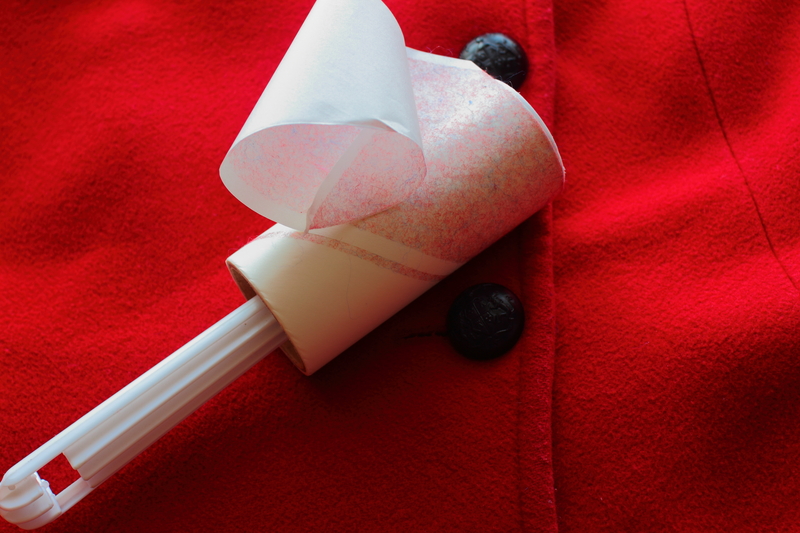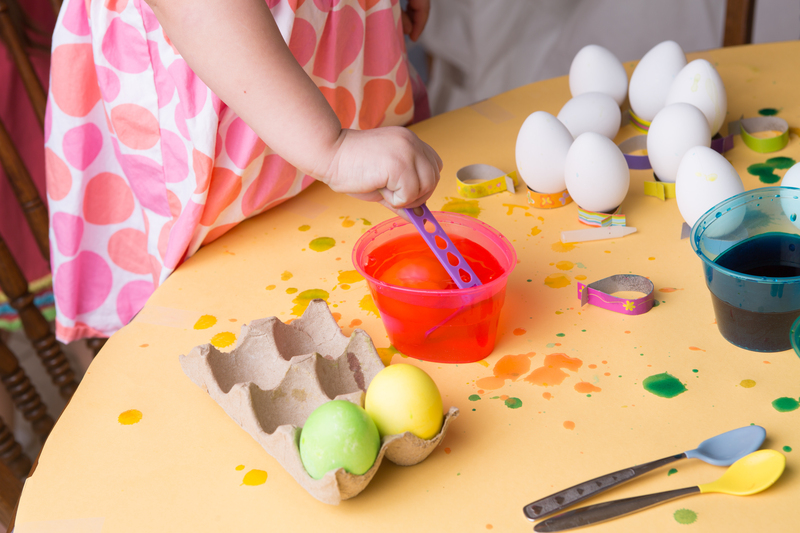Quick and Easy Solutions to Banishing Burnt Residue from Your Stovetop
Posted on 08/09/2025
Quick and Easy Solutions to Banishing Burnt Residue from Your Stovetop
If you love cooking, you know the kitchen is the heart of every home--until burnt residue clings to your beloved stovetop. Burnt-on stains not only compromise the aesthetic appeal of your kitchen but can also affect the performance and longevity of your appliance. The good news? You don't need harsh chemicals or hours of scrubbing. In this comprehensive guide, you'll discover quick and easy solutions to banishing burnt residue from your stovetop, keeping your kitchen gleaming and functional.
Why Does Burnt Residue Happen on Stovetops?
Burnt residue or scorched marks are common in kitchens around the world. Food spillovers, sugary sauces, and high-heat cooking are often to blame. Left uncleaned, burnt residue can become more stubborn and harder to remove with every use. Plus, buildup can harbor bacteria and embed unwanted odors, making your kitchen less hygienic.
- Splatters from boiling food can harden quickly.
- Greasy residue mingled with heat becomes scorched gunk.
- Sugar-based spills create tough caramelized patches.

Essential Precautions Before Cleaning
Before diving into cleaning solutions for burnt residue on your stovetop, follow these important safety steps:
- Always switch off and unplug your stove before cleaning.
- Allow the stovetop surface to cool completely to avoid burns.
- Gather appropriate cleaning supplies according to your stove type--be it glass, ceramic, or stainless steel.
Best Tools for Removing Burnt Stovetop Residue
The right tools make burnt residue removal effortless. Always avoid abrasive pads that may scratch your cooktop. Recommended tools include:
- Soft sponges or microfiber cloths
- Plastic or silicone spatulas (for gentle scraping)
- Non-abrasive scrubbing pads
- Old credit card (for persistent scorched spots)
_Natural Cleaners vs Commercial Products_
Which is better for stove cleaning--natural or commercial cleaners? Each has its merits:
- Natural cleaners (like baking soda, vinegar, and lemon) are safe for families, eco-friendly, and highly effective for most residue.
- Commercial cleaning products are formulated for tough stains and often have quick-action formulas but may involve harsh chemicals.
Step-by-Step Guide: Banishing Burnt Residue Fast
1. Using Baking Soda Paste
Baking soda is renowned for its mild abrasiveness and natural deodorizing properties. Here's how you can use it to remove burnt-on residue:
- Mix equal parts of baking soda and water to make a thick paste.
- Spread the paste liberally over the stubborn burnt areas on your stovetop.
- Let the mixture sit for at least 15-20 minutes.
- Wipe away with a damp microfiber cloth or sponge. Repeat if necessary.
For tougher stains, sprinkle a little white vinegar over the paste to boost its effectiveness. The fizz helps lift burnt debris.
2. White Vinegar Solution
*White vinegar's* mild acidity breaks down baked-on grease and neutralizes odors.
- Spray undiluted white vinegar on the affected surface.
- Let it sit for 10-15 minutes to loosen any residue.
- Wipe the area clean with a soft cloth or sponge, rinsing as needed.
Repeat as needed or alternate with the baking soda method for maximum results.
3. Lemon Juice Power
Lemons are a kitchen favorite for cleaning, with their natural acidity and fresh scent. To clean burnt stovetop spots:
- Cut a lemon in half and rub it directly over burnt residue.
- Let the juice sit for 10 minutes to break down the grime.
- Wipe clean, then polish with a damp microfiber cloth.
*Tip: For extra scrubbing power*, dip half a lemon in baking soda before rubbing.
4. Steam Cleaning Method
Steam loosens the toughest burnt-on food, making your cleaning task quick and easy.
- Cover stubborn spots with a wet towel.
- Microwave a bowl of water and pour it over the towel (on glass cooktops only) or use a steam cleaner if available.
- Let the towel sit for 10-15 minutes so the steam can penetrate the buildup.
- Remove the towel gently and wipe off loosened residue with a sponge.
5. Commercial Stovetop Cleaners
When home remedies aren't enough, specially formulated stovetop cleaners are effective at banishing burnt residue from your stovetop.
- Choose a cleaner suited for your specific surface--glass, ceramic, or metal.
- Always follow the manufacturer's safety instructions for best results and not to void appliance warranties.
- Wipe away excess product with warm water, then buff dry for a streak-free shine.
Specialized Methods for Different Stovetops
Knowing your stovetop type is essential for selecting the safest and most effective cleaning method.
_Glass and Ceramic Cooktops_
- Use non-abrasive scrapers or plastic blades to lift burnt spots without scratches.
- Clean regularly with specialty glass cooktop polishes for long-term shine.
- Avoid heavy scouring pads, which can permanently scratch the surface.
_Stainless Steel Stovetops_
- Always scrub in the direction of the grain to prevent streaks and maintain finish.
- Avoid chloride-based cleaners, which can cause discoloration.
- After cleaning, wipe with a microfiber cloth for a streak-free look.
_Gas Burner Grates and Drip Pans_
- Remove grates and soak in hot, soapy water.
- Use a pastenof baking soda and water or degreasing dish soap for built-up grime.
- Scrub with a stiff nylon brush and rinse well.
Simple Daily Habits to Prevent Burnt Residue
A little proactive maintenance can stop burnt residue from building up:
- Wipe stovetop surfaces after each cooking session.
- Clean up spills immediately before they bake on.
- Use a splatter guard while frying or boiling foods.
- Inspect and clean burners and drip trays weekly to prevent stubborn buildup.
How to Tackle Highly Stubborn Burnt Residue
Some burn marks seem impossible to remove. For deeply scorched or blackened patches:
- Apply a paste of baking soda and hydrogen peroxide and let it sit overnight for deep penetration. Scrub away gently the next morning.
- Use a razor blade scraper CAREFULLY on glass cooktops at a 45-degree angle to avoid scratching.
- For gas stovetops, detach burners and soak overnight in a degreasing solution for complete residue removal.
_When to Seek Professional Help_
If all else fails, consider calling in expert appliance cleaning services, particularly for high-end glass or induction cooktops. They use specialized tools and cleaning agents to restore shine without risking long-term surface damage.

Frequently Asked Questions About Burnt Stovetop Cleaning
- Is it safe to use steel wool on my stovetop?
Steel wool is too abrasive for most stovetops and can scratch or dull the finish. - Can I use ammonia for burnt residue?
Ammonia is effective but emits strong fumes. Use only with proper ventilation and never on aluminum or coated surfaces. - How often should I deep clean my stovetop?
Deep clean once a month, or more frequently for heavy kitchen users. - What's the quickest way to remove burnt stains from my stove?
Baking soda paste and a soft sponge is often the fastest, most accessible solution. For instant results, use commercial cleaners formulated for your stove's material.
Conclusion: Keep Your Stovetop Sparkling, Stress-Free
Banishing burnt residue from your stovetop doesn't require endless scrubbing or harsh chemicals. Instead, simple household ingredients and routine hygiene can keep your stove looking brand new. Whether you have a gleaming glass cooktop or a heavy-duty gas range, these quick and easy solutions for burnt residue removal ensure your kitchen remains spotless and inviting. Adopt these practical tips, and enjoy stress-free cooking without the burnt-on aftermath!
- Experiment with natural cleaning mixes first.
- Use commercial products as a backup for stubborn stains.
- Maintain preventive habits for long-lasting results.
Ready to say goodbye to scorched surfaces? Try these expert-backed solutions today and rediscover the pleasure of a sparkling clean stovetop!



